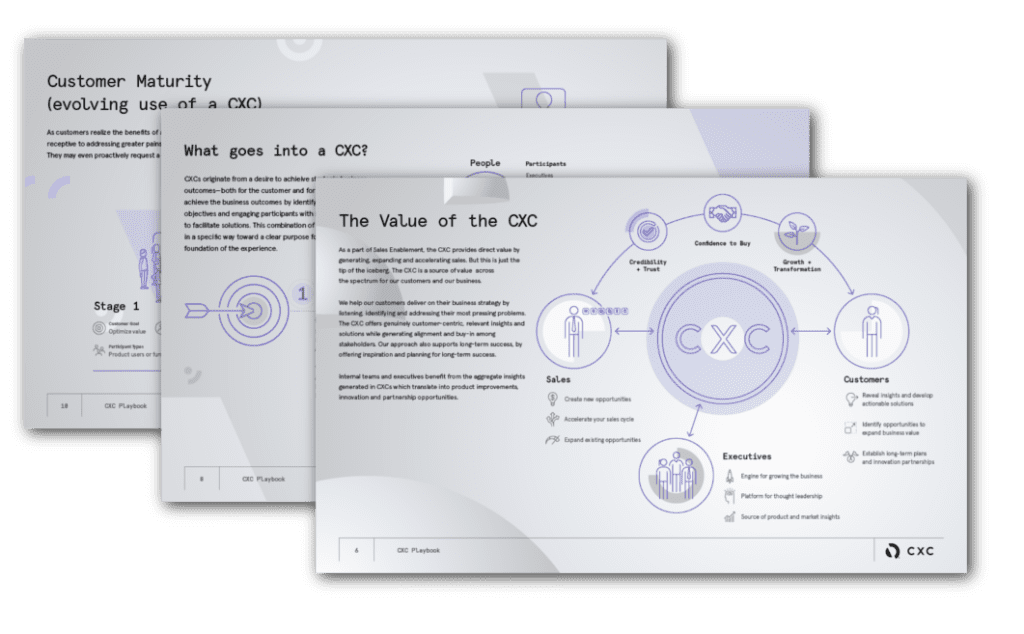Rapidly operationalize customer sales engagement
“We accomplished a year’s worth of work in three-months time.” —Senior Director, Customer Experience Centers
Shortly after acquisition, a Silicon-valley software company was given a clear directive: grow sales—fast. Much of the burden fell to a sales support team that engages customers through identifying key issues and co-creating roadmaps for solving them in a highly-customized workshop setting. These human-centered CXCs (short for customer experience centers) had a promising record—consistently shortening the sales cycle and increasing the value of the sale by up to 30%.
The challenge was to quickly operationalize the CXC program within the company, integrate it into the acquiring company’s Sales Operations and grow from delivering 30 CXCs/year to 180/year with a small CXC team who had been working together for less than a year.
With time short, we launched several work streams simultaneously. First, we focused on defining, refining, and documenting our client’s high-touch approach into a streamlined, scalable process. We also began crafting an engagement strategy and communications tools to build awareness and drive demand for the service. This included developing a strategy for integrating CXCs into the mother company and leveraging its global reach. Finally, we developed on-boarding materials, reporting tools, and a metrics-based approach to evaluating and prioritizing CXC candidates.
At the end of three months, the team delivered:
- Complete process documentation (including roles and responsibilities)
- A detailed CXC process map (and accompanying simplified customer-facing version)
- A CXC playbook describing the approach, methods, benefits, and SLAs involved in delivering CXCs
- An introduction to the CXC presentation and engagement plan to build awareness and drive demand for CXCs among the sales teams
- A reporting dashboard and metrics-based evaluation tool to review and prioritize CXC opportunities
- A model for enabling adoption at global CXCs. (including model for building capacity)
The project was not without challenges. Deadline pressures, shifting priorities, lack of clearly defined roles and different working styles created an environment in which alignment and trust were not well-established. To compensate, Territory worked onsite in highly-focused, sprint-like workshops to gather information, gain consensus and quickly validate assumptions. Work-in-progress was kept visible on the walls in “war room” fashion and available for easy review. Additionally, deliverables in development were also accessible through an online progress dashboard. Weekly all-team reviews kept the team aware of progress, but required individual initiative to ensure in-depth reviews.
Despite the pressure and ambiguity, the team forged ahead successfully. By the end of the engagement, the CXC team had already increased the volume of the CXC pipeline by 400% and were well on their way to meeting their global target.
Snippets from the CXC Playbook:



